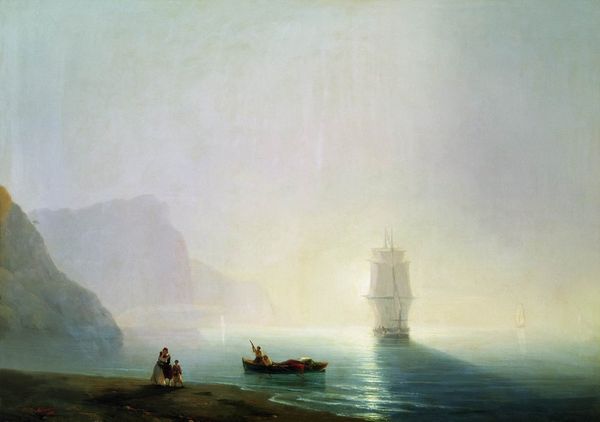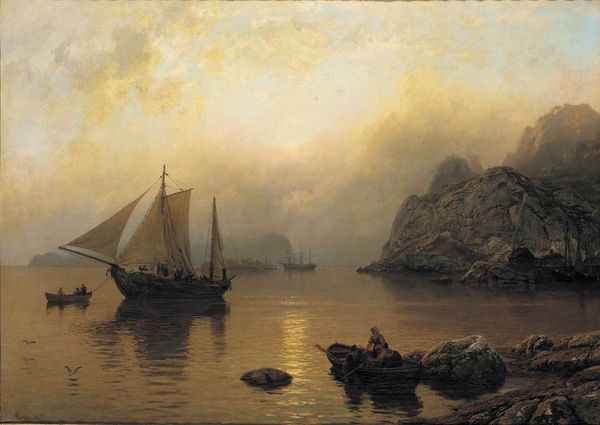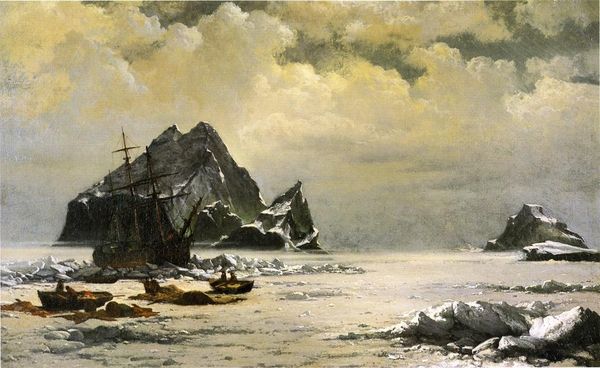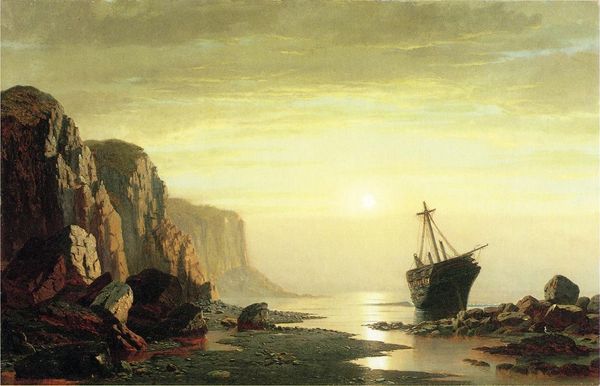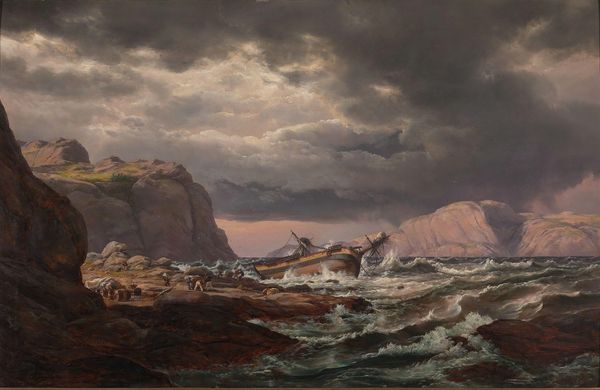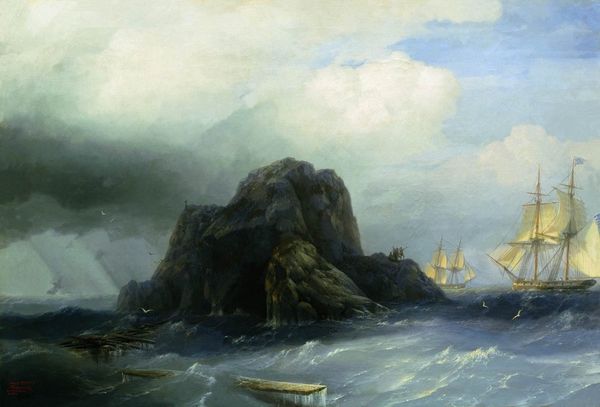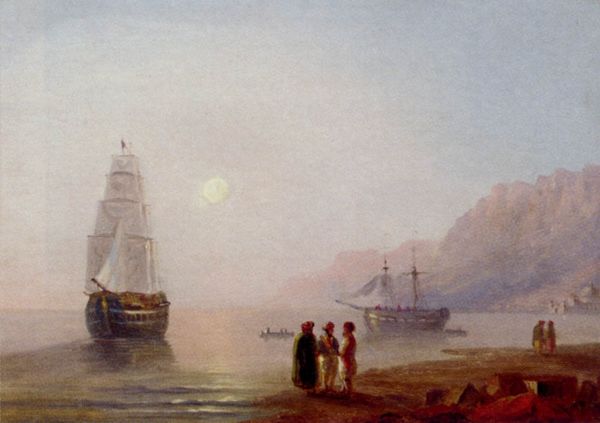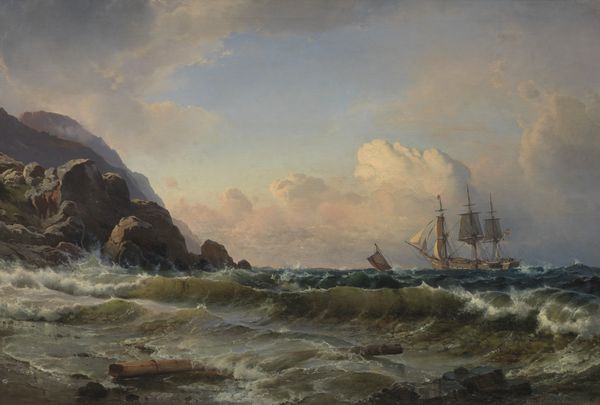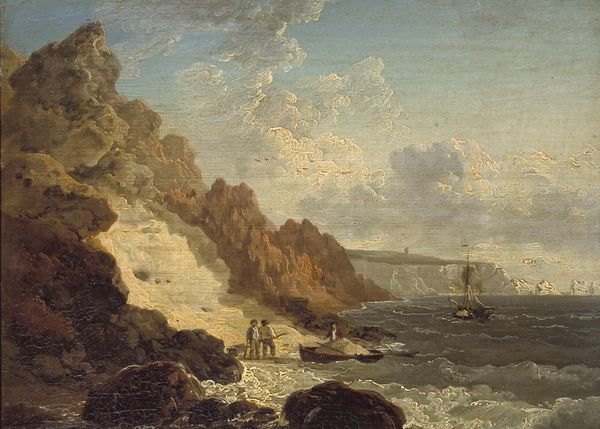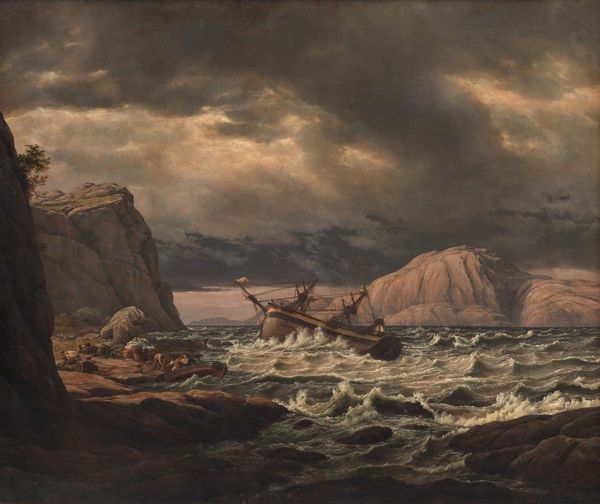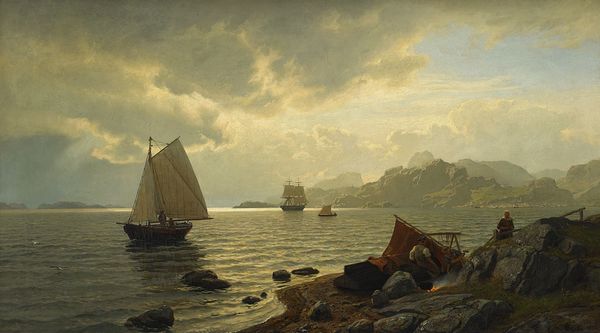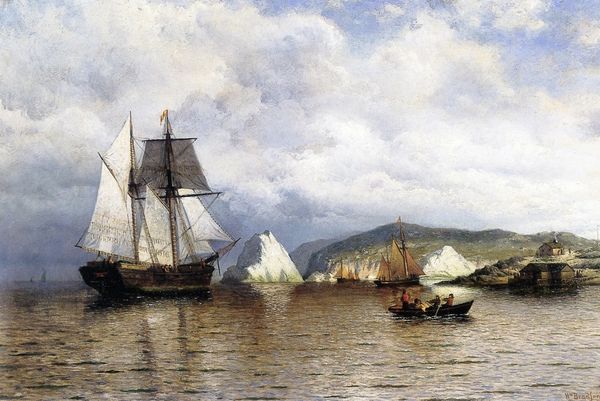
Norwegian Harbor of Refuge Or Port of Refuge on the Norwegian Coast 1873
0:00
0:00
hansgude
Private Collection
Copyright: Public domain
Curator: Looking at Hans Gude's "Norwegian Harbor of Refuge, or Port of Refuge on the Norwegian Coast," painted in 1873 using oil paints, my immediate reaction is one of stark beauty tinged with melancholy. There's something about the grey skies pressing down on the scene that really resonates. What about you? Editor: Well, I’m immediately drawn to the palpable sense of labor embedded within the landscape. The activity on the docks is as prominent as the idle ships themselves, no? Curator: Absolutely. The human element here feels vital. Look at how Gude uses light to emphasize the workers, connecting their toil to the rough beauty of the natural harbour itself. The scene seems reliant on these anonymous labors for its meaning, I guess. Editor: Indeed. This is not some untouched, sublime wilderness as we might expect of the Romantic style. Gude’s brush highlights the dependency upon those structures that support the social fabric: docks, tools, the ships in various states of disrepair. Think of the production of maritime culture; this harbour becomes a stage of making and unmaking. Curator: You're right, the "making and unmaking" is so present. The worn hulls of the ships really tell a story. And there is also the materiality: look closely at the way the oil paint recreates both the roiling water and the solid, almost monumental forms of the coastal rocks. Editor: Note also the blending of romanticism with a strain of realism: it is no coincidence that so many artists in this period were attentive to both epic scenes and material cultures of the day. One is lost without the other. Curator: I find that balance especially poignant when thinking about the context, painted as it was, with Norway finding its own identity as an independent nation. This port feels like both a safe haven, and a point of departure into the wider world. Editor: Yes, that dynamic tension certainly rings true given the historical moment. It really underscores the painting’s resonance for a society in the throes of massive change and national identity formation. We see these themes expressed in the choice of realism blended with grand narratives. Curator: Reflecting, it seems impossible to divorce the immediate appeal from the labor and material considerations inherent in both the scene represented and the paint which enables the image. Thanks for the conversation! Editor: Absolutely. This piece offers a particularly rich nexus for connecting our emotional and more critical inquiries. Thanks!
Comments
No comments
Be the first to comment and join the conversation on the ultimate creative platform.
